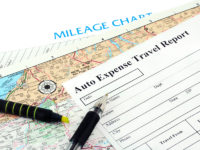As digital disruption sees workers increasingly use mobile devices and apps to book travel arrangements, it can be challenging for business leaders and financial decision-makers to regulate expense management and maintain compliance with company policy – while pursuing growth and innovation – as control and visibility into employee activity can be low.
The bedrock of any expense management approach is a formal expense policy. The latest Concur ANZ spend management index indicates the majority (82 per cent) of respondents do have a formal expense policy in place, but less than three-quarters (71 per cent) say employees always comply with the policy. A further 12 per cent say employees comply sometimes, but that leaves a worrying 17 per cent of organisations who say they don’t know whether employees are complying or not.
Managing expenses has become a greater challenge in the face of digital disruption. For cost savings and ease of use, business leaders must implement travel and expense solutions that simplify processes, provide access to actionable data and meet employee needs. This will also help managers recognise employees who comply with company expense policies.
Adopting mobile technology for travel and expense management can help save time and resources when it comes to managing expenses more effectively. As finance leaders take on more responsibility in the midst of widespread digital disruption, a solution that takes the hassle out of managing employee expenses is ideal.
We have identified three key ways financial leaders can manage travel and expense compliance, growth and innovation:
1. Keep systems simple
With employees embracing new digital tools in their personal lives, expectations are placed on employers to support similar capabilities.
Recent research shows that 69 per cent of companies surveyed felt that employees use more sophisticated tools in their personal lives than those provided by their employer for managing travel and expenses.*
2. Have an integrated system
Effective travel and expense management systems are integrated across departments, within business operations and across technologies.
The recent Concur index showed that, in 35 per cent of organisations, expense reports are paper-based, with printed receipts and photocopies. A further eight per cent of organisations use standalone spreadsheets to monitor expenses, and five per cent just check the corporate credit card bill.
There is a clear need for businesses to integrate their systems to gain maximum visibility. Organisations need to move away from paper receipts and spreadsheets. They need visibility into expenditure to ensure travel arrangements and expenses comply with company policy.
3. Take advantage of automation and mobility
Business leaders have demonstrated a preference for travel and expense tools that are convenient and easy to use, and those that integrate efficiently with or simplify established systems, as well as being simple to install.
The use of automated expense management software can be a big win for both business leaders and their employees. Mobile connectivity lets workers track and submit expenses even while they’re on the road, leading to improved business efficiencies.
* Forrester Consulting study on behalf of Concur – https://www.concur.com/en-us/lp/take-travel-expense-management-digital-era
Matt Goss, ANZ Managing Director, Concur















